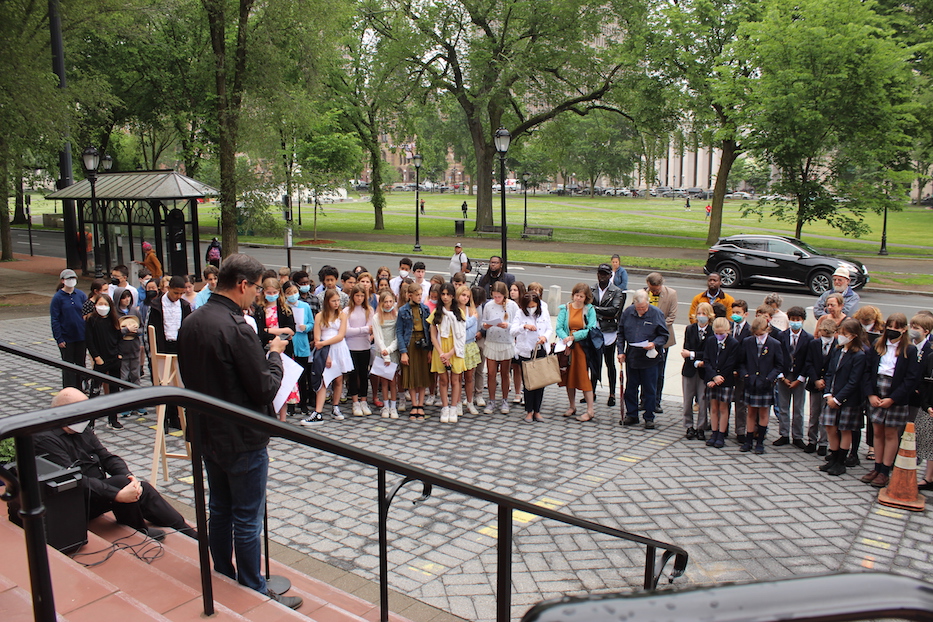
By Al Larriva-Latt in Arts Council New Haven on June 6th, 2022
At the steps of the Trinity Episcopal Church on the New Haven Green, a dozen New Haven private middle schoolers in dress clothes crouched around two metal-plated stones. To the right, colorful posters displayed family trees, timelines, and key word definitions. The students leaned closer, studying the stones.
“Lucy Tritton enslaved here,” read one. “Lois Tritton enslaved here,” read the other. The sounds of the New Haven Green—busses being dispatched, police car sirens blaring, passerby conversing—cut in.
Last Thursday morning, middle school students from The Foote School and St. Thomas’s Day School joined historians, educators, and Witness Stones Project Founder Dennis Culliton to remember Lucy and Lois Tritton, a mother and daughter who were sold on the New Haven Green on March 8, 1825. The Witness Stones Project is a still-nascent attempt to find and commemorate the lives of enslaved Black people who lived—and often died—in Connecticut. Roughly 70 people attended. Continue reading.


